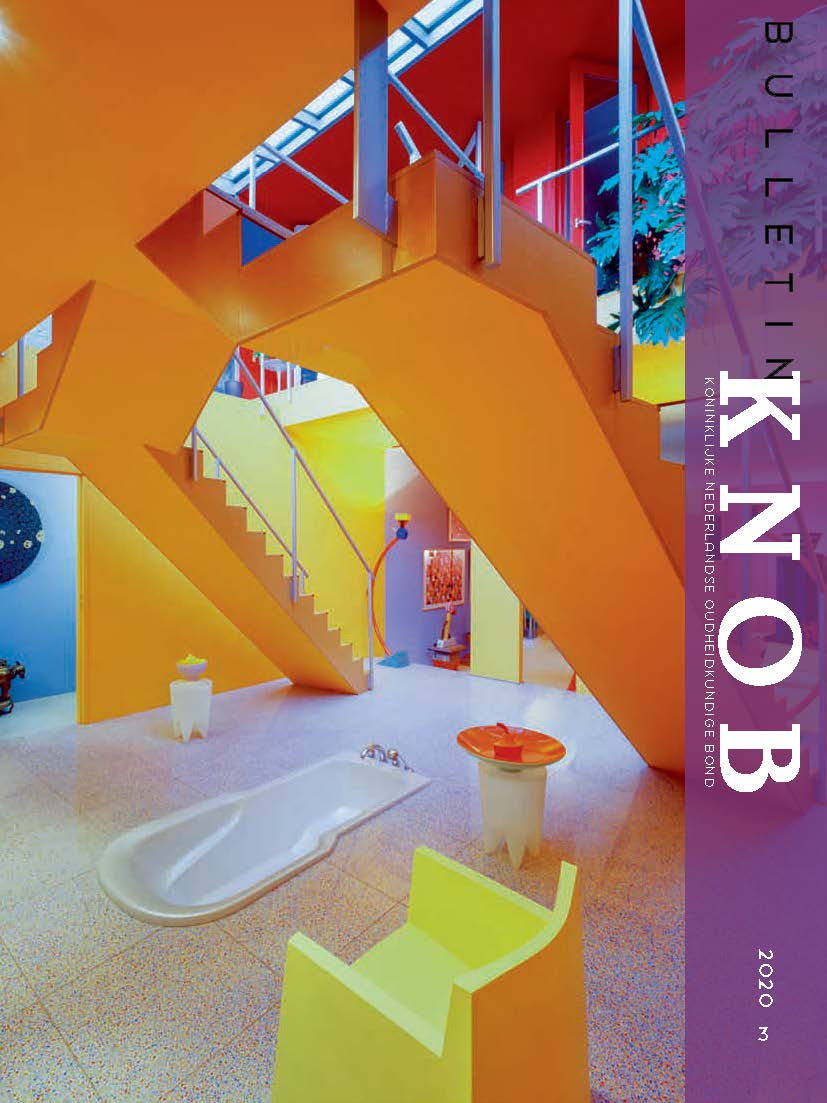Indexing ESCI / Scopus


Eva de Bruijne A Postmodern Mendini in Amsterdam. Frans Haks’ Forgotten Interior Noor Mens Appreciation for and Urban Renewal of the Westelijke Tuinsteden in Amsterdam Roos van Oosten The Settlement Pattern of Cloth Merchants, Makers and Weavers in the Textile City of Leiden 1498-1748
Book reviews
Tymen Peverelli, De stad als vaderland. Brugge, Leeuwarden en Maastricht in de eeuw van de natiestaat – 1815-1914 (book review by Gabri van Tussenbroek) Hanneke Oosterhof, ‘Want de grond behoort ons allen toe’. Leven en werk van stedenbouwkundig architecte Lotte Stam-Beese (book review by Isabel van Lent)
The issue can also be ordered online as a printed edition.
In October 2018 officials from the Amsterdam Monuments and Archaeology department (MA) made a surprising discovery in a listed building at 41 Recht Boomssloot in Amsterdam. On the ground floor they encountered a relatively unknown interior designed by the Italian architect-designer Alessandro Mendini (1931-2019) dating from 2001. The building was the former home of Frans Haks (1938-2006), who moved into the house in 1996 at the end of his directorship of the Groninger Museum, together with his partner Johan Ambaum (1931-2018). Mendini redesigned the ground floor and extended it with a...
The Westelijke Tuinsteden (western garden suburbs) in Amsterdam are regarded as a textbook example of the modern urban planning principles propagated in the 1920s and ’30s by the modernist Nieuwe Bouwen architects united in Congrès Internationaux d’Architecture Moderne (CIAM). The plan’s designer, Cornelis van Eesteren, was chairman of this international movement from 1930 to 1947. The garden suburbs are characterized by an open development of free-standing housing blocks surrounded by greenery and without obvious fronts or backs. The plan broke with the classic urban planning...
Leiden was once the foremost textile city in Europe. Under ‘de nieuwe draperie’ (the new cloth industry, from 1580), a wide variety of woollen textiles were produced. At the pinnacle of this industry the city had no fewer than seven cloth halls. Merchants, makers and weavers usually worked from home, appearing at the hall at set times to have their semi- finished or finished products inspected for quality. Thus broadcloth weavers went to the Lakenhal (Cloth Hall) and the serge weavers to the Saaihal (Serge Hall). The economic historian N.W. Posthumus summarized this strictly...
Book review of a book written by Tymen Peverelli
Book review of a book written by Hanneke Oosterhof
